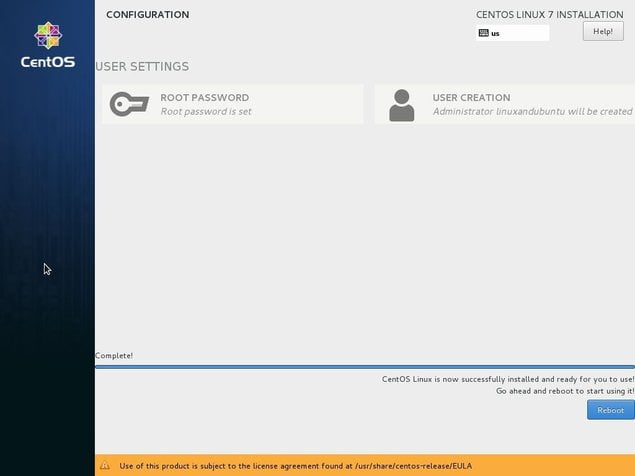CentOS 7 The Best Free And Open Source Enterprise Linux
Table of Contents
CentOS 7 is a free enterprise-class community-supported Linux OS derived from RHEL (Red Hat Enterprise Linux) sources and designed to provide compatibility with RHEL. That is, CentOS aims to provide a free community-supported alternative to the paid subscription service of RHEL. Let us take a look at the latest iteration to this very popular Linux distro, CentOS 7.
Download CentOS 7
CentOS is available for download in 5 different variations. First is the DVD iso (recommended) which is about 4GB in size so you can imagine you’re getting everything. Well not exactly, there is also an “Everything ISO” which is over 7GB big. The “Everything iso adds a complete set of packages required for populating a local mirror. If either of these is too big for you, you can go for everyone’s favorite, a live edition(Gnome or KDE). The live editions allow you test-drive CentOS without modifying your local disk before choosing to install the distro.
There is also a Minimal iso (without a GUI) which provides just the packages required for a functional system in less than 700MB and a net install iso which also doubles as a rescue image. The net install iso is very useful if you already have a local mirror in place. NB. All these are available ONLY in 64-bit editions.
CentOS Installation
After download, you can burn the iso to either a CD/DVD or USB using a dedicated tool such as Rufus/Unetbootin or dd if you know how to. You can then boot the PC off the boot media. If you downloaded either of the live media, you get to test CentOS 7 before installation.

If you have used Fedora before, you’ll find out you have the same installer provided. You set things like date and time, keyboard layout, language and support, disks and partitions and then your software selections.


Then you set up your root password and user account.

If you are setting it up to use as a server, which it excels at, you can set up your server details also in your installation setup. You will also have to accept the license information before you can use the distro.

The process is pretty straightforward albeit not the simplest.
After installation, run yum update to obtain the latest packages.
Also Read – How To Install CentsOS?
First Impressions
Depending on your choice of Desktop Environment, you’ll boot up to something familiar. We decided to go with the Gnome edition. You may even log into your cloud accounts in your initial Gnome setup. There is support for Google, ownCloud and Windows Live.

By default, the Gnome edition boots into the Classic desktop mode. If you prefer Gnome 3 as I do, all you have to do is log out and selecting the Gnome 3 from the settings before re-logging in which I quickly do. What you have is a typical Gnome desktop with all of its modern beauty and appeal.


Applications
So depending on your choice of iso, you get a differing set of applications available by default. The minimal iso packs just the basics. The live editions pack some more applications but for the full set, you need the DVD editions. You can choose stuff like Basic Web Server, Server with a GUI, GNOME and KDE desktops. These environments also come with extra add-ons that you choose to install.
You can also select the software to be installed right from the setup installation process. Mozilla Firefox is provided as the default browser, there is LibreOffice for all your Office needs and Rhythmbox for your music. Other software applications provided include Gedit as the default text editor, Boxes for virtualization, Brasero, Empathy and Evolution for chat and email needs, Cheese webcam and more. For applications that are unavailable by default, you can easily install them with the Gnome Software Manager.

Final Thoughts
CentOS 7 excels at what it does well, server-side stuff. It is the kind of distro you can pretty much set it up and have it running for a long time without any issues making it a favorite for Server OS needs. It is not popular amongst desktop users although it works quite well. It will need a little tweaking and some more installation especially if you choose the live edition over the DVD. The installer might be a bit intimidating and daunting and could use a bit of improvement. Regardless, you have an awesome community to fall back on should you encounter any issues whatsoever.
Also Read – 10 Things To Do After Installing CentOS Linux
Conclusion
With CentOS 7, you have the power to run all forms of server needs with which it excels. Then again, you also have the ability to run it as a desktop OS quite capable. The developers should just put the live editions front-up on the download page. I nearly missed them. CentOS 7 runs well and there is really nothing to complain about. If you are intrigued, you should definitely try it out. Do you use CentOS 7? Have you ever tried it? Share your thoughts and comments with us in the comments below and thanks for reading.
LinuxAndUbuntu Newsletter
Join the newsletter to receive the latest updates in your inbox.



